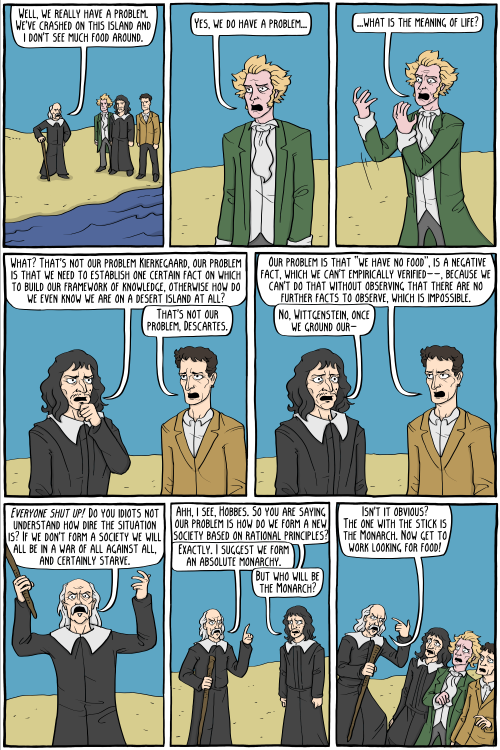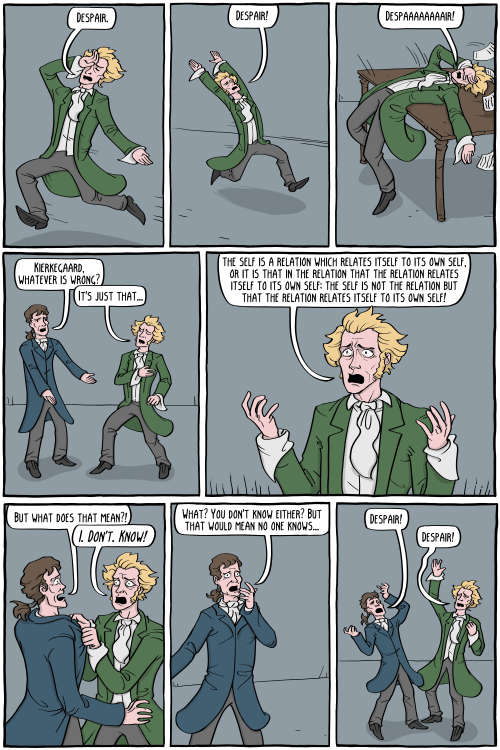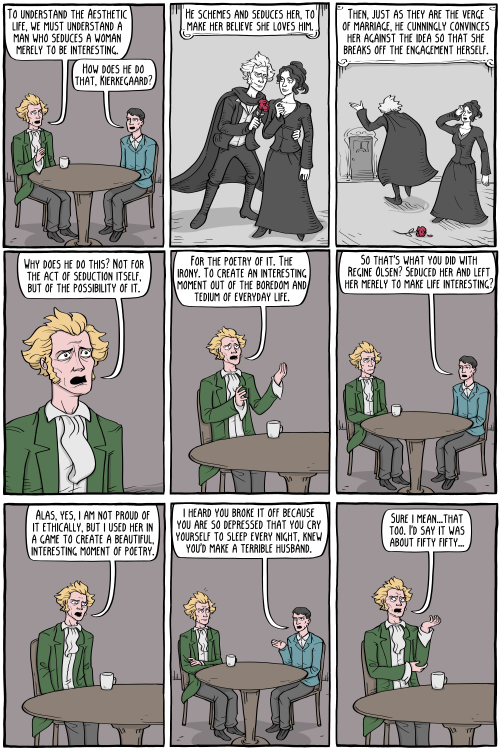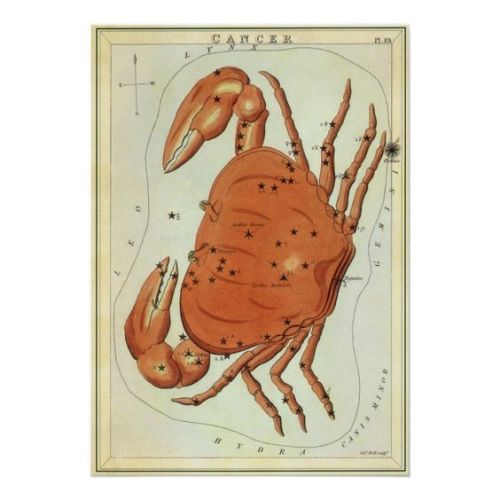#soren kierkegaard
« La gente esige la libertà di parola per compensare la libertà di pensiero, che invece rifugge. »
- Søren Kierkegaard
“My melancholy is the most faithful sweetheart I have had.”— Søren Kierkegaard (via lion-kim)
“The most painful state of being is remembering the future, particularly the one you’ll never have.”
–Søren Kierkegaard

“In the midst of winter, I found there was, within me, an invincible summer”
—Albert Camus
Reading the Stars: Acubens, the Crab
[this essay is a study in the Fixed Stars, an astrological technique that dates back to at least the 1st century, A.D. It involves tracking the relationships between the movements of the visible stars and the planets and adds a deeper, more nuanced “soul” to one’s astrological interpretation. To learn more about fixed stars, go here. To calculate the fixed stars in your natal chart, go to astro.com, click “extended chart selection” under the “free horoscopes” tab, put in your birth data, choose the “special” tab, then choose “Parans according to Bernadette Brady” from the drop-down menu]
Months ago, a news story gained traction for its eerie absurdity. Evolutionary scientists had found that 4 distinct families of animals had evolved into the form of a crab. There was even a popular meme circulated during this time entitled “The Crab Cycle” that reads: “There is only one step and it is crab”. The crab form has evolved so many times that scientists have coined a term for this phenomena: “carcination”. “There has to be some kind of evolutionary advantage to be this crab-like shape,” scientist Bracken-Grissom muses. And that’s the crux of the matter, isn’t it? We evolve not out of beauty, wisdom or some grand design. Evolution is primarily opportunistic; a number’s game. Whatever mutation or variation allows most of its kind to survive, and reproduce offspring will eventually take over the gene pool until lobsters become crabs and the familiar becomes unfamiliar in the name of life’s continuity. But this instance of carcination, of the reappearance of old forms made somehow new, makes me wonder: How does evolution take us not just forwards but backwards as well?
…
The archetype of the crab has been present in our collective consciousness for thousands of years. In addition to the animal taking up 1/12th of the zodiac, the crab has been the part of our sky since Ancient Egypt. Cancer the constellation held a powerful position in their civilization. In her book “Star and Planet Combinations,” Bernadette Brady tells us that “by about 2,000 BCE the stars of Cancer rose before the Dawn at the time of the Summer Solstice”. The Crab, in other words, marked the longest day of the year and the beginning of summer. But, like the solstice, the crab’s nature is more complex than the harbinger of light. Though the sun shines the longest on this date, the solstice also marks the beginning of night’s increase; even as the long nights of winter seem so far away, the seeds of the eventual darkening are planted with the Solstice. Astronomically, the solstice is when the Sun, after reaching its southernmost position, reverses its path and begins heading North, leading to shorter days until the Sun reverses its path once again. This back and forth motion of the Sun led the Chaldeans to associate the constellation that rose on the solstice with the Crab because it too, moves sideways. The Egyptians, similarly, associated the constellation with the scarab beetle, a creature affiliated with resurrection, because of the Sun’s culmination and “rebirth” of life that occurs on the first day of summer.
Both of these associations are intriguing in light of evolution’s repetition of the crab. The sideways motion of the animal suggests that it does not progress in a straight-forward fashion. Lateral movement is less concerned with a one-way progression. It prefers depth over breadth. It is also more attuned with cycles, which suggest that certain events coalesce again and again over the course of our unfolding lives. Spiral, cyclical time, like the concept of resurrection, like the shifting tides that the sideways-moving crab inhabits, knows there is time for increase and time for decrease. It does not only look for progress or advancement. Accordingly, the crab is equipped with highly sensitive bristles all over its body as well a hard protective shell and sharp pincers. There is a time for communing with the external world, in other words, and a time for turning inward. Could this dual nature be a key to the crab’s evolutionary success? Could you even call it success when, as stated before, the individual will of the animal means nothing in the face of the larger process of evolution?
Another of the crab’s associations is the moon, the planet that rules the sign of Cancer. The Moon is known in astrology as being “common,” or having to do with everyday, mundane manners. This quality comes from both the moon’s closeness and visibility from earth as well as its constantly changing form. Like the waxing and waning moon, “the crab advances,” and retreats, according to the Book of Symbols, “oriented by lunar tides…” (210). But no matter how many times it wanes to darkness, we know it will always return to fullness in time.
What else is resurrection but the assurance that what is dead never really dies, that life flows on, invariably? This concept is key to understanding Acubens, the brightest star in the Cancer constellation. Considered a star of happiness and spirituality, it marks an individual with optimism in the face of endings as well as an interest in these transitory points between life and death. Brady relates Acubens to “the midwife of outgoing or incoming,” making the native prone to either bringing forth new life or ushering out old ones. The natives I have noticed with Acubens are not always cheerful nor do they shy away from the harshness of life. They are, however, highly creative, and willing to squarely face the process of bringing and taking away life. A great example of this tendency is Sylvia Plath who was born with Acubens rising with her Sun. One of her most famous poems, “Lady Lazarus,” is a personalized retelling of the biblical story about the man who was brought back from death by God. She often combines triumphant and macabre imagery, calling her skin “bright as a Nazi lampshade”. She collapses the space between the foreign and familiar, stating that “the flesh/The grave cave ate will be/At home on me”. She draws death closer, in other words, until it is but a pile of ash and “A cake of soap/A wedding ring/A gold filling”. By juxtaposing the brightness of her skin with an object of death, she shows the relationship between opposites, how life and death not only sustain each other but are always near the other, waiting to switch.
I think this bridging of duality, once again, is key to this archetype. In Buddhist Cosmology, out of six realms, the most auspicious birth belongs to those who reincarnate as human, even more so than those born into the heavenly realm. Us humans, you see, experience enough pain and loss to seek an end to it (i.e. enlightenment) without too much to be unable to help ourselves. I think the energy of Acubens intimately understands this delicate balance and in fact takes joy in the joys and sufferings of a human birth. It understands that life is precious because it will eventually end but also that all endings have a way of reversing themselves. With that, there is a stewarding, a wish to revive and aid those out of you. Ram Dass, a famous spiritual figure with an exalted Jupiter in the sign of the Crab reminds that “we’re all just walking each other home”. In a weird way, the crab symbolizes this fact. Beyond Cancer’s relationship to the domestic and familial, the crab says a lot about the idea of eternal return. Its unassuming, sideways scuttle seems attuned to some deeper thing that remains, despite our outer movements and change.
Related to this idea of our regressive development, Kierkegaard says this about growth: “What is education? I should suppose that education was the curriculum one had to run through in order to catch up with oneself”. The entire idea of astrology is predicated on this past-facing form of becoming. With our first breath, we are imprinted by the unique configuration of planets at our time of birth. Over the course of our whole lives our birth charts never change though, hopefully, our expression of these nascent archetypes morphs with us. We don’t work or progress into having Mercury in Pisces or Acubens in paran with our chart: it’s already there, waiting for its time.
In order to believe in resurrection, one must believe in something beneath the finite endings we experience on a daily basis. We must dare to look past the shifting forms to some eternal, ineffable pivot, bringing life back and forward again and again. We must believe that this progress through time we experience is not about being anywhere different or uncovering something new but simply being attuned to this life force that is always already there.
The first time I tried to identify the stars in the night sky, Acubens was the first one I saw. It peeked out above the top of my garage, setting just above the horizon. I was delighted to see a star I had heard of before and experienced only in theory. It was truly my first initiation in to a more visual astrology and it left me with a feeling that the star was more than happy to see me too. It was like a bright hand in the dark, taking the first step with me. Perhaps I’m projecting onto an inert thing but, having Acubens in paran to my rising, couldn’t it also just be like recognizing like? Nowadays, I can see it on most clear nights, unmoving to the naked eye until it disappears again, then I wait for its eventual return.
Note: While I quote Bernadette Brady often here, I want to name the harmful and exclusionary practices Brady has employed towards QTBIPOC individuals as well as her refusal to take responsibility for her actions. I value her seminal work on the subject of Fixed Stars but hope other individuals will come forward to further her research from a more justice and egalitarian point of view.
Sources:
- “Why Everything Eventually Becomes a Crab,” Sara Kiley Watson, https://www.popsci.com/story/animals/why-everything-becomes-crab-meme-carcinization/
- “Star and Planet Combinations,” Bernadette Brady
- “Lady Lazarus,” Sylvia Plath
- Kierkegaard quote excerpted from “Madness, Rack and Honey” by Mary Ruefle
- “The Book of Symbols”
Post link
Taurus: “My standpoint is armed neutrality.”
Gemini:“What if everything in the world were a misunderstanding, what if laughter were really tears?”
Cancer: “The greatest hazard of all, losing one’s self, can occur very quietly in the world, as if it were nothing at all.”
Leo: “Don’t you know that a midnight hour comes when everyone has to take off his mask? Do you think life always lets itself be trifled with? Do you think you can sneak off a little before midnight to escape this?”
Virgo: “The highest and most beautiful things in life are not to be heard about, nor read about, nor seen but, if one will, are to be lived.”
Libra: “I see it all perfectly; there are two possible situations — one can either do this or that. My honest opinion and my friendly advice is this: do it or do not do it — you will regret both.”
Scorpio: “Your own tactic is to train yourself in the art of becoming enigmatic to everybody. My young friend, suppose there was no one who troubld himself to guess your riddle–what joy, then, would you have in it?”
Sagittarius: “To dare is to lose one’s footing momentarily. Not to dare is to lose oneself.”
Capricorn: “The thing is to understand myself: the thing is to find a truth which is true for me, to find the idea for which I can live and die. That is what I now recognize as the most important thing.”
Aquarius: “One must not think slightingly of the paradoxical…for the paradox is the source of the thinker’s passion, and the thinker without a paradox is like a lover without feeling: a paltry mediocrity.”
Pisces: “What labels me, negates me.”









